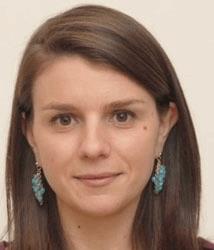Turning A Ship: How Janssen Is Changing Its Culture For Patients

By Ed Miseta, Chief Editor, Clinical Leader

For years, pharma has had a model in place for dealing with sites and patients: Design a trial protocol, hand it to sites and patients, and tell them what they need to do. While that model seemed to work, it also created problems that were never solved. Few patients opt to participate in trials, many start trials and then drop out, and recruiting physicians was equally difficult. These issues combined to create low recruitment and retention rates and cause trials to be costly and time consuming.
Addressing those patient and investigator issues was a primary goal of Janssen’s patient and investigator engagement group which was formed in 2016. Katie Mazuk, senior director, global head investigator and patient engagement for Janssen, says her primary responsibilities include bringing patient and investigator centricity into the R&D function to resolve patient and site issues.
“For many years in the R&D space, our external stakeholder focus has been on regulators,” says Mazuk. “Regulators certainly play a critical role in the approval process, but the way in which we work with stakeholders has been turned upside-down in recent years. At least one key trend is forcing the industry to change its approach to stakeholders.”
 That trend, according to Mazuk, is patient empowerment. Patients today are much more engaged with their own health and are taking greater control of their healthcare decisions. Patients no longer sit back and await medical advice from their physicians. They search for the information they need. They are learning more about their conditions and the medicines available to treat them. They are also talking to and interacting with other patients dealing with the same ailments. That trend is forcing pharma to rethink who their customer actually is, and what “good” now looks like in those relationships.
That trend, according to Mazuk, is patient empowerment. Patients today are much more engaged with their own health and are taking greater control of their healthcare decisions. Patients no longer sit back and await medical advice from their physicians. They search for the information they need. They are learning more about their conditions and the medicines available to treat them. They are also talking to and interacting with other patients dealing with the same ailments. That trend is forcing pharma to rethink who their customer actually is, and what “good” now looks like in those relationships.
“That trend is forcing companies to bring patient and investigator perspectives into the R&D process,” says Mazuk. “When I say the R&D process, I am referring to our development decisions, our trial decisions, how we deploy operationally, how we interact, and our relationships with patients and investigators. We are trying to look at the R&D process more holistically to determine how having those insights can help us create a better clinical trial experience for both patients and investigators.”
Mazuk readily adds that pharma still has to focus on meeting the needs of regulators. But she believes it is possible for companies to do that while also bringing patient and investigator perspectives into the picture. According to Mazuk, incorporating all viewpoints is the only way for pharma to create the best possible trials.
Mazuk also admits incorporating these perspectives into trial design is not easy and is arguably one of the greatest challenges she faces. For compliance and other reasons, pharma cannot simply open its doors and invite patients and investigators inside. She spends much of her time attempting to facilitate interactions and then driving those insights across a large global organization.
“Those insights will cause us to question what we do as a company, what we do in a specific disease area, and what we do in our trials. Ultimately, that information should be used across our entire portfolio to create better clinical trials and a better patient and investigator experience.”
Listening At Two Levels
Mazuk describes the information gathering process as taking place on two levels. First, there is the information gathered on things the company knows are pain points for patients across the board. For example, a key area that patients are asking for more support in is broad clinical trial awareness and access. To gather that type of general trial feedback, the company conducts focus groups, performs social listening or market research, and creates advisory boards to gather feedback from patients. The feedback also helps Janssen to prioritize the resolution of pain points deemed important to patients. This type of feedback is fit-to-purpose and will address all trials and all patients.
Incidentally, Mazuk notes these are skills that have always existed in pharma companies on the commercial side of the house, where she has also worked. In her current position, she is bringing those techniques into the pre-commercial space in order to design better trials.
Information is also gathered on specific conditions. With some diseases, Janssen already has a wealth of knowledge regarding the needs of patients. In disease areas where the company is relatively new and does not have a lot of expertise, social listening becomes very important. Mazuk describes this as an effort to learn about the challenges patients are facing. Social listening involves engaging in social media groups to read about the issues patients are discussing and holding focus groups to hear their concerns.
Patients are blogging and posting across a wide variety of public and patient-focused groups. Monitoring those groups is one way for pharma to hear the voice of patients living with that disease. While the insights are generally not used for trial design, Mazuk notes there are many key themes that can be taken away from those discussions to help researchers learn and understand what is important to patients.
“People often ask me if there is a silver bullet for getting the patient voice into trials,” says Mazuk. “I have to tell them there isn’t one. At the platform level, you have to understand the problems you are trying to solve, and then find the right methodology to best represent those needs. Within Janssen, on a trial-specific level, prioritized compounds are now required to have a patient voice plan. The plan has to be in place before the compound enters a phase 3 trial.”
Mazuk notes the patient voice plan has to be customized to get direct patient insights. The plan will depend on the disease area and could include advisory boards, global focus groups, or social media, depending on the specific insights required of patients. For some indications, multiple methodologies could be used.
Get The Right Information To The Right People
The researchers who design trials generally do not meet with patients. At the same time, the folks who meet with patients do not write protocols. Once you gain needed insights from patients, how do you get that information to the people who need it? This is another challenge for Mazuk and her team.
“Getting this information to where it will do the most good definitely requires a culture change within the company,” says Mazuk. “At times it can seem like you’re trying to turn a ship. Within Janssen and J&J we have a credo-centric culture that believes in the importance of putting patients first. That makes these conversations a bit easier to have. But we still have to deal with various individuals on all of the clinical teams.”
There can certainly be tension that exists between two teams when one is focused on what’s best for patients and the other is focused on the data they need to gain regulatory approval. But Mazuk describes that tension as healthy. The diversity and balance of opinions is important, and she notes it is important to not tip the discussion in favor of one side or the other.
“When it comes to trial design, decisions have to be made,” she says. “There will always be trade-offs that go along with those decisions. What we are attempting to do is make sure all available information is heard prior to those decisions being made. Years ago, the patient voice was not heard when decisions were being made. The big win here is not that patient preference will always override other stakeholder concerns in the design process. The win is that we now know what is important to patients and are fully considering their needs when the critical decisions around trial design are made.”
Culture Change Is Necessary
Mazuk quickly adds that the process of getting the patient voice heard is not always easy. For some companies, changing the internal culture to be more receptive to accommodating the wishes of patients will not be an easy transition, but it’s something that must be done. As a patient engagement leader, she believes it is important to convince everyone that you are looking at both sides of the issue.
“Culture change means taking a new concept and making it a part of the way you do business,” she says. “In a large organization, that can be a challenge. You are taking a concept (incorporating the patient voice) and rolling it out globally to thousands of employees. How we accomplish that is something that keeps me up at night. I will view my group as being a success when we are able to embed this concept of patient centricity into the DNA of the company.
Her other big challenge relates to the regulatory, compliance, and legal frameworks that exist in R&D. There is not a lot of precedence that exists for incorporating patient feedback into those functions, and for that reason, she has to look to the commercial side of the business for guidance. Much of her time is spent trying to figure out how to do things and how to get things set up.
Mazuk has support from senior leadership and does not believe a lack of precedence or a clear global framework from regulators should keep you from pursuing your goals. Still, she notes the process of getting everyone in the company to be solution oriented will take some time. Janssen has a multidisciplinary Patient Engagement Leadership Team in place to establish the patient voice into functions across the organization.
“Katie and her team play a critical role embedding patient engagement in everything we do,” says Katherine Capperella, Global Patient Engagement Leader at Janssen. “Our approach to ongoing, proactive patient dialogue throughout the entire lifecycle has to have coordinated efforts, and incorporating patient perspectives into clinical trial design is a critical step in the process.”
“Understand that there will be difficulties putting new paradigms in place,” adds Mazuk, “but don’t allow yourself to say that just because it is hard, you shouldn’t do it. Stay positive and keep everyone focused on the overall goal, which is how we can best take care of our patients. When you get everyone aware of what you’re trying to accomplish, it becomes easier to rally them around that goal.”
